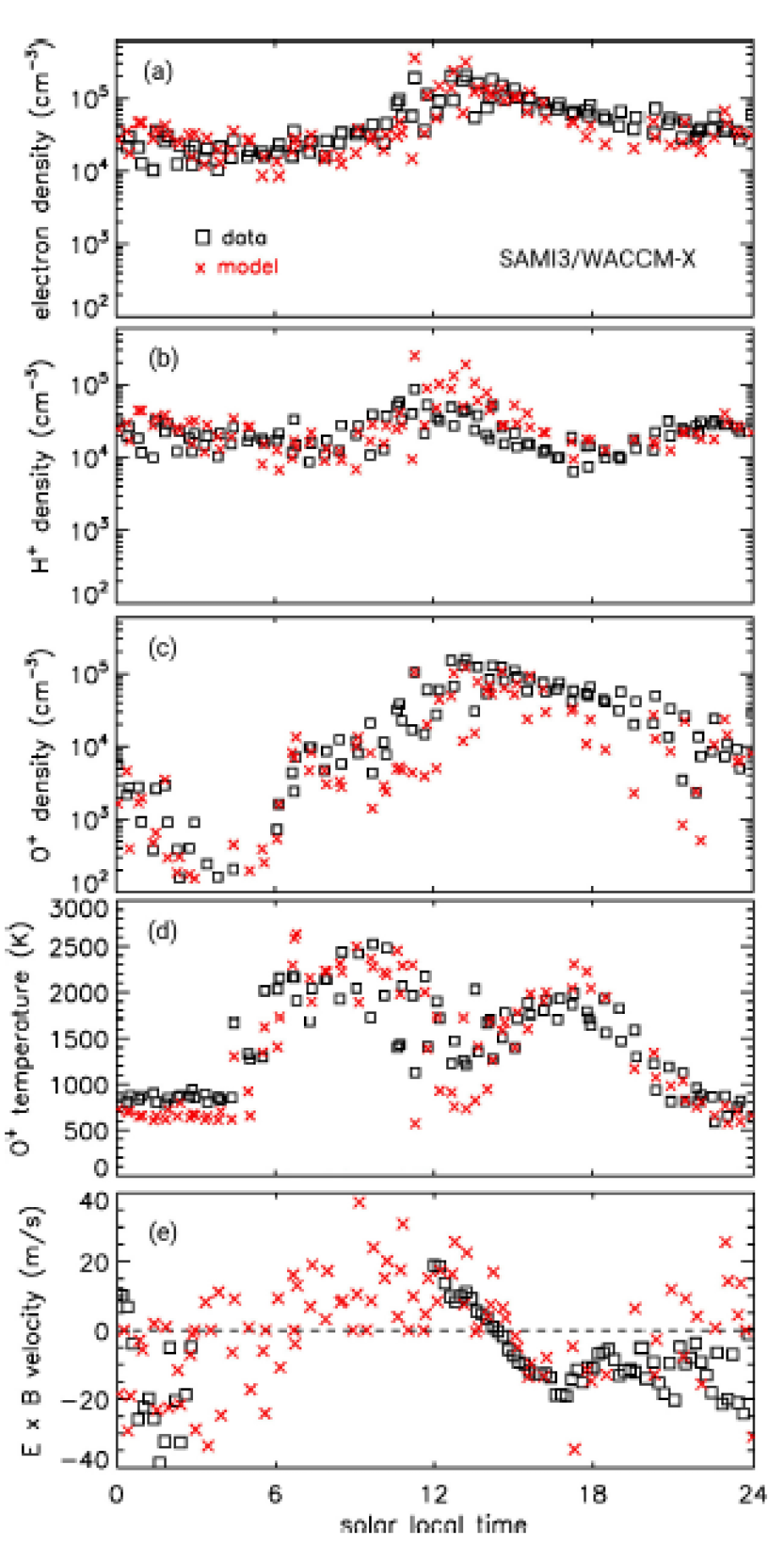Publication: GRL; HAO Author: Astrid Maute; Authors as listed in article: J.D. Huba, R. Heelis, and A. Maute
The NASA Ionosphere Connection explorer was launched in October 2019 with the goal of understanding the transition from Earth's atmosphere to space by measuring key quantities at low latitudes. On 23 December 2019, the Ion Velocity Meter (IVM) instrument on the ICON satellite measured large depletions in the O+ density and downward drifts in the post-midnight/pre-sunset time sector. Interestingly, the H+ density was not depleted during this time and remained relatively uniform.

Comparison of observations (black squares) to SAMI3/WACCM-X results (red crosses) (a) electron density, (b) H+ density, (c) O+ density, (d) O+ temperature, and (e) the vertical ExB velocity as a function of solar local time.
To understand the observation, we employ data/model comparison using the ionosphere/plasmasphere code SamI3 is Another Model of the Ionosphere (SAMI3) with neutral wind, density, temperature inputs from Thermosphere-Ionosphere-Electrodynamics General Circulation Model (TIEGCM) and Whole Atmosphere Community Climate Model eXtended (WACCM-X). We find that both the SAMI3/WACCM-X and SAMI3/TIEGCM results captured the post-midnight O+ density depletion but that the SAMI3/WACCM-X results were in better agreement with the IVM observations overall. During the solar minimum conditions the transition altitude (~500 km) from O+ to H+ dominance is mostly below the ICON satellite (~575 km) and therefore the prevailing downward drift leads to larger depletion in O+ density which is much smaller at these altitudes than H+ density with a larger scale height.